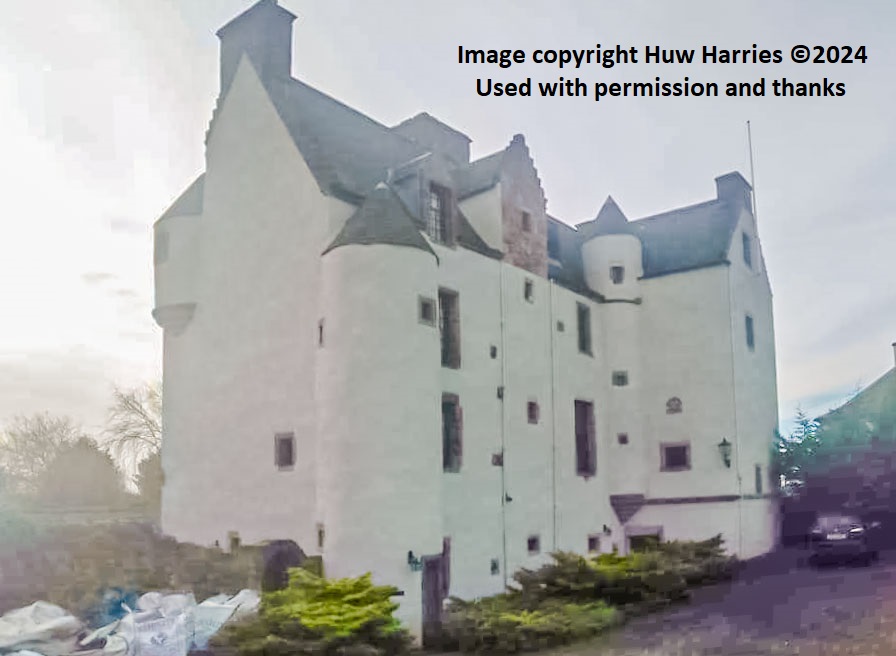Ballencrieff House

Ballencrieff House Details
Ballencrieff House, privately occupied C16 tower house of the Murrays burned down in 1868 and restored 1990s
- Closest To: Longniddry, Aberlady, Gullane, Haddington
- Access: No Access
- Grid Reference: NT487783
Ballencrieff House is a large country house dating to the 16th and 17th century that occupies a level site looking northwards towards Aberlady Bay. It can be seen from the public road, and is now a private home after restoration was carried out in the 1990s.
The lands of Ballencrieff (with a capital messuage) were held by Robert de Pinkeny in 1296, an Englishman from Northamptonshire, who had made a spurious claim to the Scottish throne a few years before. He died later that year and was succeeded by his brother Henry, who himself died in 1301, leaving his estate to the king of England. It seems likely that Ballencrieff was granted by Robert the Bruce to James Douglas; it was certainly held by Archibald, the 4th earl, in 1421. Presumably they were reclaimed by King James II when he overthrew the Douglases in the 1450s, and were in the hands of Patrick de Crichton in 1456. In 1507 James IV granted them to his private secretary James Murray. In 1510, half of the lands were granted to Robert Borthwick, the royal master of artillery. In 1511 John Murray of Blackbarony had a charter for (presumably the remaining part) of Ballencrieff, and in 1513 he was succeeded by his son Andrew. The tower that had been built was destroyed in 1544 by the English. It was held by Andrew Murray of Blackbarony in 1551, and John Murray of Blackbarony in 1586. Andrew died in 1572, so it was probably his heir John who erected or renewed the tower house, probably a traditional L-plan structure, as a heraldic datestone records this date. In 1617/18 it was sold to Sir Gideon Murray of Elibank, and passed to his son Patrick in 1632. A datestone of 1625 indicates a significant work was carried out here by the Murrays at this time, probably extending the residential block. It was then remodelled in about 1730, and the house remained occupied until a disastrous fire in 1868.
The layout of the house is an elongated L-plan, with a stair tower in the re-entrant angle. There are round turrets on some of the corners, and it seems clear that there were several phases of occupation and development – however these are not properly understood, not least because of the 18th century reworkings and the fire. The restoration of the house involved the demolition of the 18th century work, which has also confused things further.
Become a supporter of my work to access a more detailed history